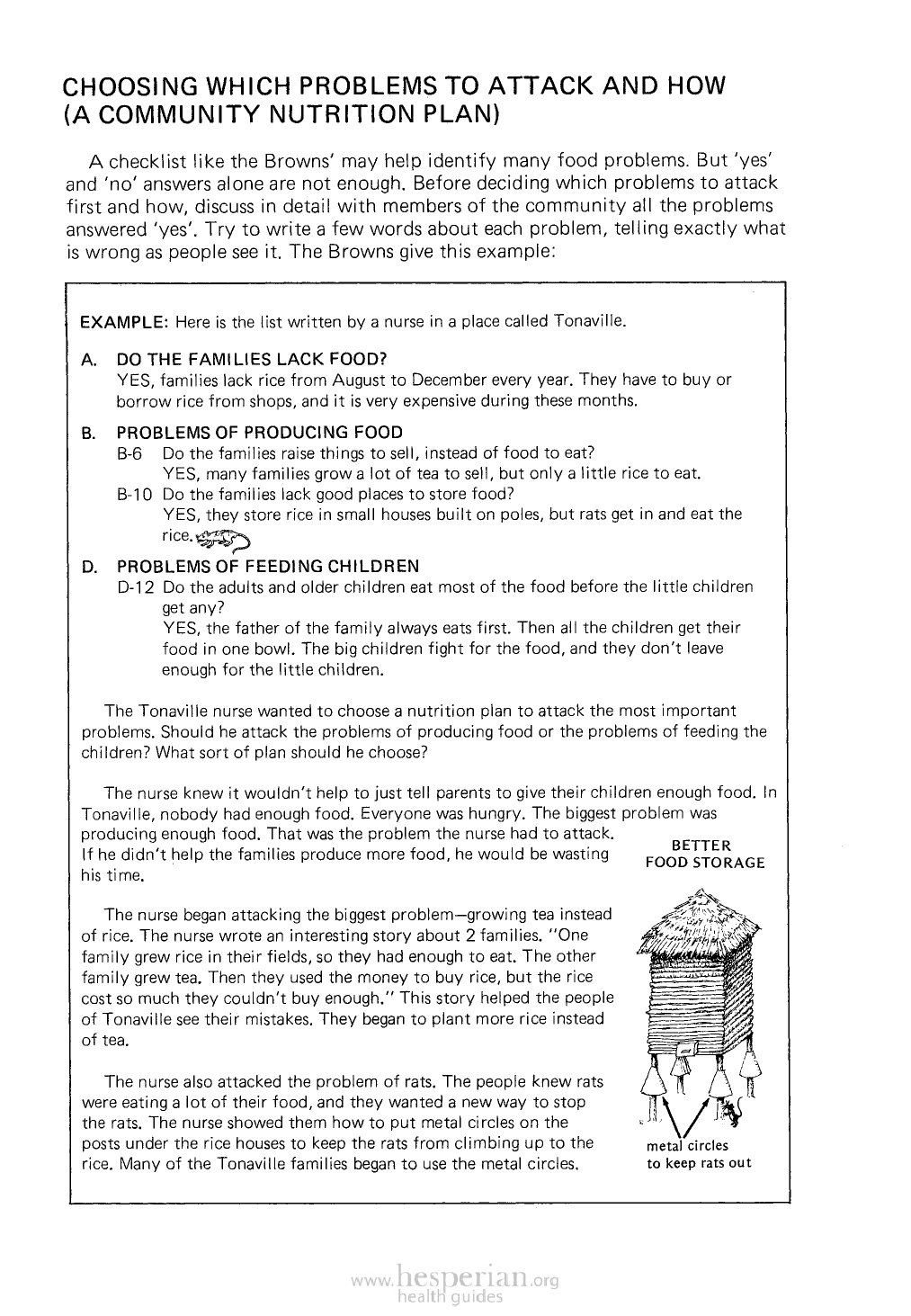
25-24
CHOOSING WHICH PROBLEMS TO ATTACK AND HOW
(A COMMUNITY NUTRITION PLAN)
A checklist like the Browns’ may help identify many food problems. But ‘yes’
and ‘no’ answers alone are not enough. Before deciding which problems to attack
first and how, discuss in detail with members of the community all the problems
answered ‘yes’. Try to write a few words about each problem, telling exactly what is
wrong as people see it. The Browns give this example:
EXAMPLE: Here is Ihe list written by a nurse in a place called Tonaville.
A. DO THE FAMILIES LACK FOOD?
YES, families lack rice from August to December every year. They have to buy or
borrow rice from shops, and it is very expensive during these months.
B. PROBLEMS OF PRODUCING FOOD
B-6 Do the families raise things to sell, instead of food to eat?
YES, many families grow a lot of tea to sell, but only a little rice to eat.
B-10 Do the families lack good places to store food?
YES, they store rice in small houses built on poles, but rats get in and eat the
rice.
D. PROBLEMS OF FEEDING CHILDREN
D-12 Do the adults and older children eat most of the food before the little children
get any?
YES. the father of the family always eats first. Then all the children get their
food in one bowl. The big children fight for the food, and they don’t leave
enough for the little children.
The Tonaville nurse wanted to choose a nutrition plan to attack the most important problems.
Should he attack the problems of producing food or the problems of feeding the children? What
sort of plan should he choose?
The nurse knew it wouldn’t help to just tell parents to give their children enough food. In
Tonaville, nobody had enough food. Everyone was hungry. The biggest problem
was producing enough food. That was the problem the nurse had to attack.
If he didn’t help the families produce more food, he would be wasting his
time.
BETTER
FOOD STORAGE
The nurse began attacking the biggest problem—growing tea
instead of rice. The nurse wrote an interesting story about 2 families.
“One family grew rice in their fields, so they had enough to eat. The
other family grew tea. Then they used the money to buy rice, but the
rice cost so much they couldn’t buy enough.” This story helped the
people of Tonaville see their mistakes. They began to plant more rice
instead of tea.
The nurse also attacked the problem of rats. The people knew rats
were eating a lot of their food, and they wanted a new way to stop
the rats. The nurse showed them how to put metal circles on the posts
under the rice houses to keep the rats from climbing up to the rice.
Many of the Tonaville families began to use the metal circles.
metal circles to
keep rats out